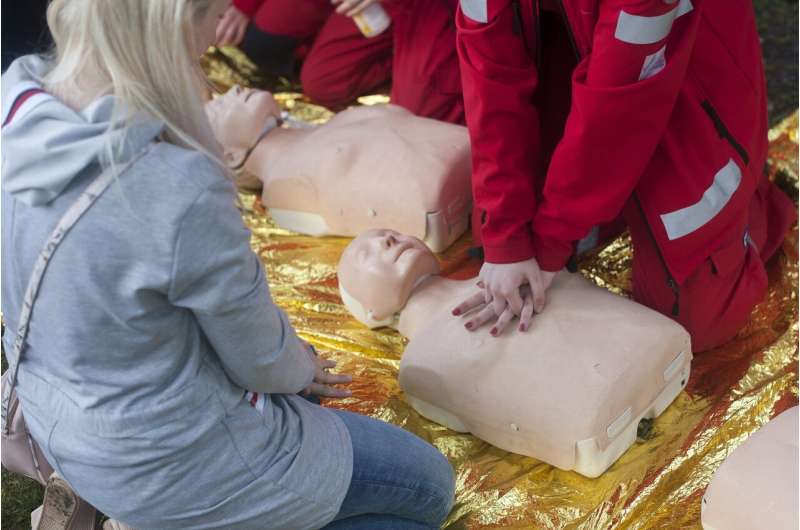
Around 50,000 people suffer sudden cardiac arrest in Germany every year. When occurring outside a hospital, the chances of survival are only ten percent. Survivors often suffer from severe permanent neurological damage. On July 21st, 2021, researchers from the Faculty of Medicine—University of Freiburg, Germany, published together with German and US colleagues a review article in the journal Nature Reviews Neuroscience. They describe the most important therapeutic factors for successful resuscitation. The scientists name the therapy concept based on these factors CARL (Controlled Automated Reperfusion of the whoLe body). In recent years, the Freiburg physicians and perfusionists have already developed a special and mobile heart-lung machine for resuscitation that allows a CARL therapy for the first time. One of the first persons treated with CARL therapy successfully survived a cardiac arrest after about 120 minutes of resuscitation. The affected person suffered no brain damage.
“After decades of research, we were able to develop a new treatment method to reduce the physical damage that would otherwise occur after cardiac arrest and resuscitation. Our findings and the device we developed could be of great importance for emergency medicine,” said Prof. Dr. Friedhelm Beyersdorf, Medical Director of the Department of Cardiovascular Surgery at Medical Center—University of Freiburg. “The CARL method incorporates the latest basic research and state-of-the-art cardiac surgical techniques. Through innovative medical technology developments of our own, we now have the opportunity to apply this new treatment principle inside and outside the hospital. This raises the prospect of people surviving much longer and better after cardiac arrest than was previously thought,” Beyersdorf said.
Success factors for resuscitation
As a result of cardiac arrest, blood vessels in the brain swell, making them less permeable to gas exchange. “By maintaining a high, pulse-like blood pressure during controlled whole-body reperfusion (CARL therapy), we can resuscitate the brain most quickly,” Beyersdorf says. Oxygen levels must be low and increased only slowly. Otherwise, free radicals are generated in the tissues. These very aggressive molecules can then attack, among other things, the mitochondria, the power plants of the cells. A reduced calcium concentration in the blood also helps to protect the mitochondria. “It is very important to lower the body temperature of the patients as quickly as possible in order to slow down metabolic processes,” explains the Freiburg cardiac surgeon, who published the study together with colleagues from Yale University, USA, and Max Planck Institute for Metabolic Research, Germany.
CARL: For the first time, resuscitation therapy in its complexity is possible
Some of the aspects were known in principle, but not in the depth of detail. In addition, various aspects of therapy were not technically feasible until now. That is why scientists at the Medical Center—University of Freiburg founded the startup Resuscitec a few years ago, where they developed a device that specifically meets the complex requirements of resuscitation: the CARL system.
“To our knowledge, CARL is the first device that was developed specifically for resuscitation and can take over the complete cardiopulmonary function of the patient. With CARL we can treat the damage caused by cardiac arrest and the associated lack of oxygen. This is possible because we can immediately measure and control all the important parameters, such as blood values, that are necessary for successful resuscitation,” says Prof. Dr. Christoph Benk, Head of Perfusion at the Department of Cardiovascular Surgery at Medical Center—University of Freiburg.
A unique dual-pump control system enables the necessary high pulsatile blood flow and realizes a high blood pressure, oxygen levels can be precisely controlled, and a mobile cooling unit allows the patient’s body to be cooled down quickly and safely. “The device is designed relatively small and light so that it can fit in the ambulance and be carried directly to the patients,” explains Benk.
First CARL deployments give great hope
In an initial pilot study, the doctors were able to save many of the patients treated with CARL therapy even though resuscitation time was very long, ranging from 50 to 120 minutes. “In the case of a 43-year-old patient, resuscitation was successful after 70 minutes. The patient has fully recovered and is back to working as a teacher,” says Prof. Dr. Georg Trummer, Head of cardiovascular surgical Intensive Care Unit in the Department of Cardiovascular Surgery at Medical Center—University of Freiburg. In another case, a patient suffered cardiac arrest at home and was brought to the Medical Center—University of Freiburg by helicopter after first responder resuscitation. “Here, the patient was immediately connected to the CARL device and—after 120 minutes—successfully resuscitated,” Trummer said. The patient suffered no brain damage and was able to return to her job. To back up these initial promising results, a study is now planned at three European universities as part of the European Commission’s Horizon 2020 program.
University of Freiburg

